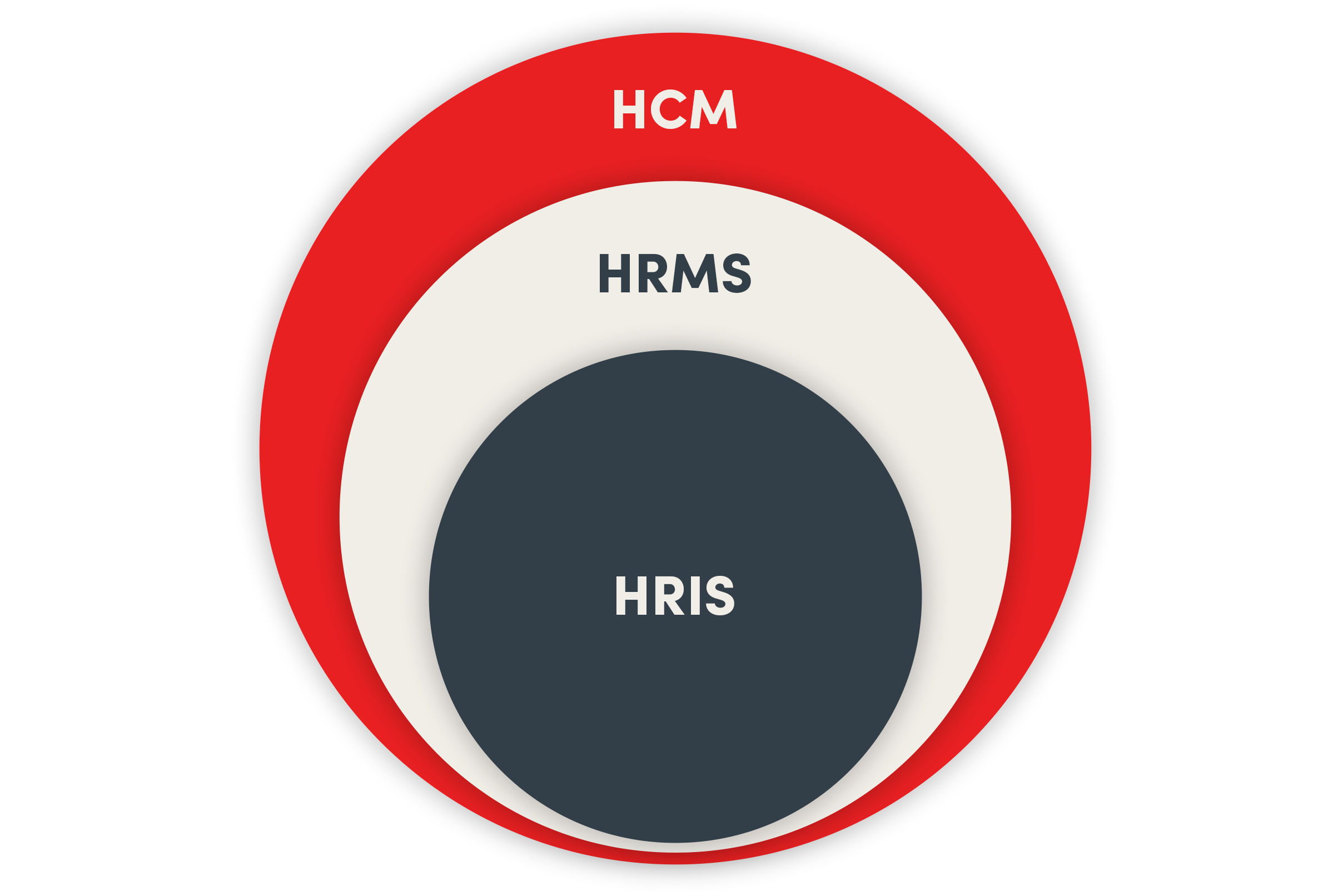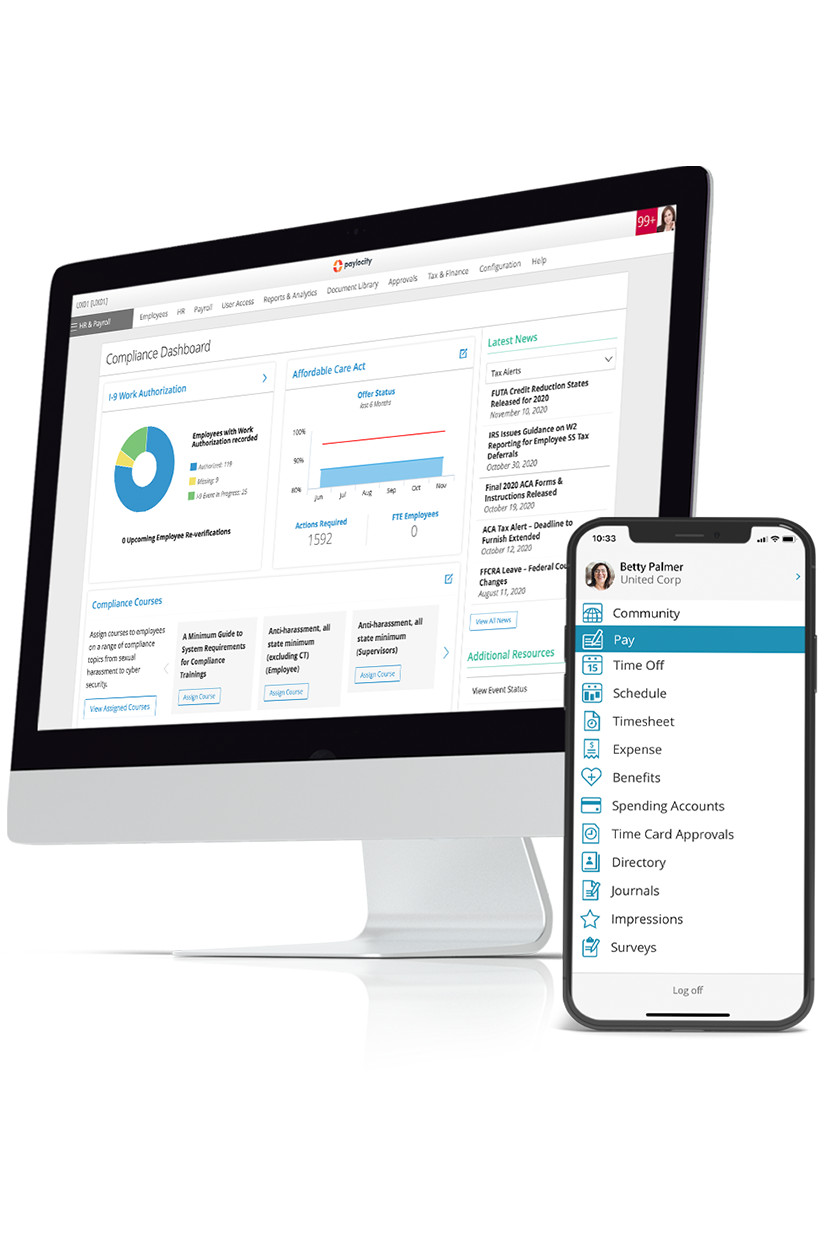resources
HR 101: What is an HRIS (Human Resources Information System)?
June 13, 2023
Explore what an HRIS is and how to choose and implement the right one for your organization.
Blog Post

As technology advances, human resources teams have more and more tools at their fingertips. At the core of many modern solutions is a system that helps administrators manage key HR processes and functions, often referred to as HRIS.
A major contributor to larger human capital management (HCM) initiatives, HRIS software combines the innovations of information technology (IT) with HR practices to make storing and retrieving employee information easier.
Key Takeaways
- HRIS is software used to streamline HR tasks and manage employee data.
- HRIS tasks include payroll processing, benefits management, compliance monitoring, and shift management.
- Modern HRIS’ come in a variety of types to suit different needs.
- Properly choosing and implementing an HRIS requires a lot of planning, research, and coordination from stakeholders across your organization.
What does HRIS stand for?
HRIS stands for human resource information system. Essentially, it’s a set of tools or features that store employee information and digitally support traditional HR functions like payroll, recruiting, and training.
Like digital record-keepers, HRIS platforms replace physical file cabinets of personnel records with streamlined databases that are easily accessed and updated. These systems can automate required processes, such as I-9 verification, and allow users to quickly update their own information, enrollments, etc.
HRIS vs. HRMS vs. HCM
The terms HRIS, Human Resource Management System (HRMS), and HCM are often used interchangeably. However, there are some differences.
- HRIS: Traditionally focused on administrative tasks, such as completing payroll processing or maintaining compliance, some HRIS have more recently added functionality to address other talent management needs like performance reviews or recruiting.
- HRMS: Originally created to fill the gaps in HRIS technology and focus on people management tasks. HRIS platforms have evolved to include some of this functionality, so there is a lot of overlap today between the two types of systems.
- HCM: Both HRIS and HRMS fit under the concept of HCM. This is the broader, strategic approach to acquiring, managing, and developing employees throughout the employee lifecycle. With a grander scope, range of subjects, and depth of impacts, HCM leverages integrated technology to enable a comprehensive talent strategy. Combined correctly with HRIS and HRMS, these systems can work together like pieces of an engine to drive an organization’s success.

Key Functions of HRIS Software
As a suite of tools, the key functions of HRIS software often facilitate core HR administrative duties. You’ll likely find an HR information system that includes at least some of the following:
- Payroll – Payroll processing, managing payroll taxes, wage garnishment, and more.
- Core HR – Essential HR functions, documentation management, employee self-service portals, HR workflows, and compliance monitoring.
- Benefits administration – Services that help your employees receive benefits, including open enrollment, and interface with third-party benefit services.
- Employee time tracking and scheduling – Employee shift and scheduling management, which often funnels directly into the payroll system.
- Talent management – Automation and assistance with critical tasks throughout all stages of the employee lifecycle, from recruiting to onboarding and employee development.
- HR analytics – Less frequently, HRIS systems have some amount of reporting capabilities to monitor key HR metrics. More advanced tools may even use AI to help generate customized insights.
- Employee experience tools – A more modern HRIS includes functions to enhance the employee experience, including peer-to-peer recognition, employee surveys, and social collaboration hubs.
Regardless of how many possible features are available, a quality HRIS should be able to provide flexible options that include only the most necessary tools based on an individual organization's unique needs.
Examples and Types of HRIS Systems
There are several different options when it comes to an HRIS. The one you choose will generally depend on what purpose you have in mind. Do you have specific day-to-day operational requirements? What tactical and strategic talent management gaps do you want to address?
Here are some examples of HRIS systems to consider depending on your needs:
- Operational HRIS – Operational HRIS primarily focuses on streamlining day-to-day HR processes so managers can spend less time on mundane, repetitive HR-related activities. For example, it assists with everyday personnel management tasks, such as updating employment benefit records.
- Tactical HRIS – Tactical HRIS helps optimize resources and inform decisions about recruitment, onboarding, employee training and development, and more. This type can process data within your organization’s business context and help keep you up to date on competitor performance.
- Strategic HRIS – Strategic HRIS emphasize higher-level analytics and actionable insights for senior managers. This is best suited for managing budgets and incorporating market data into resource allocation calculations.
- Comprehensive HRIS – Comprehensive HRIS will give you all the benefits of the Operational, Tactical, and Strategic systems, so you’ll have all the data you need at your fingertips. These systems are best for those looking for a "one-stop-shop" type of experience.
- Limited-Function HRIS – Limited-Function HRIS focus on one specific task, such as employee benefits management. They’re a cost-effective option if you only need one specific tool, which makes them popular with smaller organizations.
Benefits of HRIS & Payroll Software
Using HRIS and payroll software has many advantages over piecing together legacy systems, including automating your existing processes and ensuring compliance with legislation or regulations. Many systems can also assist with high-level analytics and strategy, empowering you to make better-informed planning and leadership decisions.
Streamlined Data & Processes
At its core, an HRIS is intended to help manage employee information within an organization’s defined structure. It does this by streamlining the entry, storage, and access to multiple types of data, including:
- Applicant and candidate recruiting data
- New hire onboarding data
- Employee compensation and benefits information
- Time off and attendance information
Automation & Accuracy
The ability to automate tasks also saves time for HR teams, freeing them to focus on strategic initiatives that matter. HR Automation can not only save an organization thousands of hours, but also lessen the risk of human error by reducing manual data entry.
Most HRIS systems will include self-service portals that enable employees to log in, update, and verify information themselves. Some also offer mobile app versions of the tools.
Improved Compliance
There are many compliance benefits to having a solid system of record in place, where employees can easily find completed training courses, governmental forms, and employment agreements in case of an audit. Another compliance benefit of using HRIS is faster and easier distribution of updated policies to all employees.
Enabling HR as a Strategic Partner
Some HRIS platforms also include features for building, running, and analyzing reports based on the data they maintain, but this is a less common offering compared to HCM solutions. The systems that offer reporting and analysis features can provide HR teams with valuable real-time data that can aid overall HR planning and strategy.
Why Are HRIS Solutions Important?
HRIS solutions are crucial for modern organizations to maintain efficient and accurate operations. An HRIS can reduce manual administrative burden and automate workflows, while more advanced platforms also enhance the way teams interact with each other through employee experience capabilities.
These tools enable HR teams to spend more time on strategic initiatives that build culture and community throughout their organization.
As demonstrated by Amazon's 2021 struggles with accurate employee leave, pay, and benefits, not having a unified, integrated HR information system in place can lead to disaster. Organizations of all sizes should carefully assess gaps and risks in their legacy software and select the platform that will meet workforce needs today and in the future to realize the full benefits of an HR technology investment.
How to Choose an HRIS Solution
Choosing the right HRIS for an organization can be a daunting but rewarding task. When implemented, an HRIS will impact employees and administrators across the organization, so it needs to be powerful enough to handle all the data being entered while also intuitive enough that it’s easy to use.
Moreover, it needs to come with tools that can be configured to meet your company’s specific needs. Bearing this in mind, there are several steps organizations should take when selecting an HRIS.
1. Choose Your Agent(s)
Evaluating a potential HRIS system can be complicated based on your setup. Some organizations can conduct research with internal resources, but you may determine that a third-party consultant is needed to manage the assessment process.
2. Define User Needs and Project Limits
Before exploring the options available, find out what your business really needs and the impacts of those needs across the organization. Also determine what bandwidth, technical infrastructure, and financing the organization can put towards an HR tech initiative or upgrade.
3. Find HRIS Candidates
Even the most basic internet search will return hundreds of viable HRIS options, so be sure to allow enough time for the exploration period. To narrow down the contenders, consider these factors:
- Level of compliance tracking and updates
- Track record in the organization’s industry
- Implementation methodology successes
- Privacy and security features
- Customer service approach and history
- Flexibility for customization and future updates
4. Form a Selection Committee
Create a cross-functional group that will make the ultimate recommendation to executives. Include members from several departments, including IT, HR, finance, and other stakeholders.
5. Submit a Proposal Request
Depending on the scope of the project, the selection committee may send out a request for proposals (RFP) to the narrowed list of vendors. The request should ask for pricing information, minimum technical requirements, vendor experience, and an implementation schedule.
6. Set Up a Demonstration
Organize live demonstrations from the top contenders with every committee member in attendance. Use the list of needs from above to help craft questions. Ask for examples of how the vendor has implemented their solution for similar clients. Remember, the purpose of the demonstration isn’t to see how powerful or fancy the platform is, but how well it fits your specific organizational needs.
7. Make the Call
Meet with the selection committee to debrief all of the demonstrations, organize any follow-up requests such as client references or on-site visits, and create the final recommendation report to executive leadership.
How to Implement a New HRIS
Successfully implementing a new HRIS into your organization’s existing systems can be as complex as choosing the software in the first place. Like that selection process, there are multiple steps in the implementation process:
1. Pick the Team
HRIS vendors will normally provide a liaison or team to work with an organization to get the platform customized, installed, and operational. It is helpful for the organization to also have an internal team that further aligns and facilitates this process, including members from IT and HR who will be working with the software the most.
2. Design a Roadmap
Working together with your vendor, draft designs of the organization’s current procedures and the requirements involved. The designs should emphasize functional and technical needs and any potential integration challenges with the current system.
3. Test the Platform
Create a group of tech-savvy beta users to test the new software and provide feedback. After the initial test phase ask a small group of employees to test the system and provide feedback about ease-of-use.
4. Inform and Train Users
When ready, the new platform should be revealed to the rest of the organization along with training aides, FAQs, walkthrough sessions, etc. The goal is to make the transition as easy and painless as possible for all employees so they can immediately use the new tools upon launch.
5. Launch the System
After everyone has had time to familiarize themselves with the new platform, permanent roles for maintaining the software are in place, and there are clear methods for providing feedback or reporting issues on the software, the organization can roll out the new system for use. Most HRIS vendors will also provide a permanent liaison or team to handle any service requests or operational issues that arise.
Is Paylocity an HRIS?
Yes, Paylocity is an HRIS system, but it also has HRMS and HCM software capabilities. Our platform not only automates manual HR tasks but also has the functionality to help organizations achieve larger HCM goals, including retaining talent and fostering connection among employees.
Paylocity is the only HRIS designed with the employee experience in mind and one that includes a full suite of tools catered for the entire employee lifecycle.
Request an HRIS demo today to learn more about our platform.
FAQs About HRIS
Is it hard to learn HRIS?
Absolutely not. HRIS software is specifically designed to have an intuitive user interface. It’s true that some platforms are more complex than others, so it’s essential to invest in staff training. However, most business users are able to learn the features with a little practice time.
What does an HRIS do for employees?
Simply put, it makes your employees’ lives easier. Having all the HR data your business uses available on a single platform streamlines your operations and supercharges efficiency. Your staff will be able to spend less time on mundane tasks and more on helping your business deliver for your clients.
Do all companies use an HRIS?
More and more organizations are using HRIS as the benefits of these tools become clear. Swift advances in technology are also playing a role. Previously, the cost of using traditional HRIS meant only larger organizations could afford it. Now, cloud-based platforms are making HRIS software more accessible to smaller businesses, and many are taking full advantage.

HR Tools Built With Employees in Mind
Recruit and retain talent by shaping an environment that makes employees feel valued and engaged. With HR tools built with employees in mind, you can equip your employees to be more self-sufficient and gain valuable insights into what you can automate and where you can strategically focus your resources. You can deliver the experience your employees need to find meaning in their work, and you'll continue improving efficiency.


